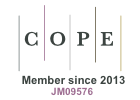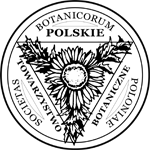Morphological and Molecular Characterization of Entomophthorales (Entomophthoromycota: Entomophthoromycotina) from Argentina
Abstract
Keywords
References
Bałazy, S. (1986). Taxonomic criteria for inter- and intraspecific differentiation in the Entomophthoraceae, exemplified by the subgenus Zoophthora. In R. A. Samson, J. M. Vlak, & D. Peters (Eds.), Fundamental and applied aspects of invertebrate pathology (pp. 201–204). Foundation of the Fourth International Colloquium of Invertebrate Pathology.
Bałazy, S. (1993). Flora of Poland, Fungi (Mycota), Vol. 24, Entomophthorales. W. Szafer Institute of Botany, Polish Academy of Sciences.
Barta, M., & Cagáň, L. (2005). Records of aphidophagous Entomophthorales in Slovakia. Insect pathogens and insect parasitic nematodes. IOBC/wprs Bulletin, 28(3), 69–72.
Barta, M., & Cagáň, L. (2006). Observations on the occurrence of Entomophthorales infecting aphids (Aphidoidea) in Slovakia. BioControl, 51, 795–808. https://doi.org/10.1007/s10526-006-9007-7
Batko, A. (1966). A new aphidicolous fungus from Poland, Zoophthora phalloides sp. nov. (Entomophthoraceae). Acta Mycologica, 2, 7–13. https://doi.org/10.5586/am.1966.002
Blackman, R. L., & Eastop, V. F. (2000). Aphids on the world’s crops: An identification and information guide (2nd ed.). Wiley.
Choi, S. W., Lim, J. R., Moon, H. C., Kim, J. H., Song, Y. J., Nai, Y. S., & Kim, J. S. (2016). Aedia leucomelas (Lepidoptera: Noctuidae) pathogenic Entomophaga aulicae (Zygomycetes: Entomophthorales) in sweet potato fields. Journal of Asia Pacific Entomology, 19, 71–79. https://doi.org/10.1016/j.aspen.2015.11.008.
DePriest, P. (1993). Small subunit rDNA variation in a population of lichen fungi due to optional group I introns. Gene, 134, 67–74. https://doi.org/10.1016/0378-1119(93)90175-3
Feng, M. G., Johnson, J. B., & Kish, L. P. (1990). Survey of entomopthogenic fungi naturally infecting cereal aphids (Homoptera: Aphididae) of irrigated grain crops in southwestern Idaho. Environmental Entomology, 19, 1534–1542. https://doi.org/10.1093/ee/19.5.1534
Freimoser, F. M., Jensen, A. B., Tuor, U., Aebi, M., & Eilenberg, J. (2001). Isolation and in vitro cultivation of the aphid pathogenic fungus Entomophthora planchoniana. Canadian Journal of Microbiology, 47, 1082–1087. https://doi.org/10.1139/w01-115
Gargas, A., & DePriest, P. T. (1996). A nomenclature for fungal PCR primers with examples from intron-containing SSU rDNA. Mycologia, 88, 745–748. https://doi.org/10.2307/3760969
Glare, T. R. (1988). Variation in the entomopathogenic fungal genus Zoophthora, with special reference to Z. radicans [Doctoral dissertation, Australian National University]. https://doi.org/10.25911/5d67b42b6ff00
Glare, T. R., & Milner, R. J. (1991). Ecology of entomopathogenic fungi. In D. K. Arora, L. Ajello, & K. G. Mukerji (Eds.), Handbook of applied mycology (pp. 547–612). Marcel Dekker.
Glare, T. R., Milner, R. J., Chilvers, G. A., Mahon, R. J., & Brown, W. V. (1987). Taxonomic implications of intraspecific variation amongst isolates of the aphid-pathogenic fungi Zoophthora radicans Brefeld and Z. phalloides Batko (Zygomycetes: Entomophthoraceae. Australian Journal of Botany, 35, 49–67. https://doi.org/10.1071/BT9870049
Gryganskyi, A. P., Humber, R. A., Smith, M. E., Hodge, K., Huang, B., Voigt, K., & Vilgalys, R. (2013). Phylogenetic lineages in Entomophthoromycota. Persoonia, 30, 94–105. https://doi.org/10.3767/003158513X666330
Gryganskyi, A. P., Humber, R. A., Smith, M. E., Miadlikovska, J., Wu, S., Voigt, K., Walther, G., Anishchenko, I. M., & Vilgalys, R. (2012). Molecular phylogeny of the Entomophthoromycota. Molecular Phylogenetics Evolution, 65, 682–694. https://doi.org/10.1016/j.ympev.2012.07.026
Gustafsson, M. (1965). On species of the genus Entomophthora Fres. in Sweden. I. Classification and distribution. Lantburkshogskolans Annaler, 32, 102–212.
Hajek, A. E., Steinkraus, D. C., & Castrillo, L. A. (2018). Sleeping beauties: Horizontal transmission via resting spores of species in the Entomophthoromycotina. Insects, 9, Article 102. https://doi.org/10.3390/insects9030102
Hall, T. A. (1999). BioEdit: A user-friendly biological sequence alignment editor and analysis program for Windows 95/98NT. Nucleic Acids Symposium Series, 41, 95–98.
Humber, R. A. (1983). Species complex in the Entomophthorales: New problems for old species. In Society for Invertebrate Pathology 16th Annual Meeting (pp. 44–45). Cornell University.
Humber, R. A. (1989). Synopsis of a revised classification for the Entomophthorales (Zygomycotina). Mycotaxon, 34, 441–460.
Humber, R. A. (1994). Special considerations for operating a culture collection of fastidious fungal pathogens. Journal of Industrial Microbiology, 13, 195–196. https://doi.org/10.1007/BF01584009
Humber, R. A. (2012). Fungi: Identification. In L. A. Lacey (Ed.), Manual of techniques in insect pathology (pp. 153–185). Academic Press. https://doi.org/10.1016/B978-0-12-432555-5.X5000-3
Humber, R. A. (2016). Entomophthoromycota: A new overview of some of the oldest terrestrial fungi. In D. Li (Ed.), Biology of microfungi (pp. 127–145). Springer International Publishing. https://doi.org/10.1007/978-3-319-29137-6_6
Humber, R. A., & Feng, M. G. (1991). Entomophthora chromaphidis (Entomophthorales): The correct identification of an aphid pathogen in the Pacific Northwest and elsewhere. Mycotaxon, 41, 497–504.
Jensen, A. B., & Eilenberg, J. (2001). Genetic variation within the insect-pathogenic genus Entomophthora, focusing on the E. muscae complex, using PCR- RFLP of the ITS II and the LSU rDNA. Mycological Research, 105, 307–312. https://doi.org/10.1017/S0953756201003434
Jensen, A. B., Eilenberg, J., & López Lastra, C. C. (2009). Differential divergences of obligately insect-pathogenic Entomophthora species from fly and aphid hosts. FEMS Microbiology Letters, 300, 180–187. https://doi.org/10.1111/j.1574-6968.2009.01778.x
Jensen, A. B., Fournier, A., Widmer, F., Keller, S., Eilenberg, J., & Enkerli, J. (2007). Molecular tools to study natural occurrence, ecology and phylogeny of Entomophthorales. IOBC/wprs Bulletin, 30(1), 99–105.
Jensen, A. B., Thomsen, L., & Eilenberg, J. (2001). Intraspecific variation and host specificity of Entomophthora muscae sensu stricto isolates revealed by random amplified polymorphic DNA, universal primed PCR, PCR-restriction fragment length polymorphism, and conidial morphology. Journal of Invertebrate Pathology, 78, 251–259. https://doi.org/10.1006/jipa.2002.5079
Keller, S. (1991). Arthropod-pathogenic Entomophthorales of Switzerland. II. Erynia, Eryniopsis, Neozygites, Zoophthora and Tarichium. Sydowia, 43, 39–122.
Keller, S. (2007). Arthropod-pathogenic Entomophthorales: Biology, ecology, identification. Office for Official Publications of the European Communities.
Kjøller, R., & Rosendahl, S. (2000). Detection of arbuscular mycorrhizal fungi (Glomales) in roots by nested PCR and SSCP (single strand conformation polymorphism). Plant and Soil, 226, Article 189. https://doi.org/10.1023/A:1026499923717
Lieckfeldt, E., Samuels, G. J., Helgard, H. I., & Petrini, O. (1999). A morphological and molecular perspective of Trichoderma viride: Is it one or two species? Applied and Environmental Microbiology, 65, 2418–2428. https://doi.org/10.1128/AEM.65.6.2418-2428.1999
López Lastra, C. C., & Scorsetti, A. C. (2006). Hongos Entomophthorales patógenos de insectos de la República Argentina [Entomophthorales fungi pathogens of insects from Argentina]. Revista de Biología Tropical, 54, 311–315. https://doi.org/10.15517/rbt.v54i2.13871
López Lastra, C. C., Toledo, A. V., Manfrino, R. G., & Gutierrez, A. C. (2019). Southernmost records of Entomophtoromycotina. Updated review of Entomophthoralean fungal insect pathogens of Argentina. Caldasia, 41, 349–357. https://dx.doi.org/10.15446/caldasia.v41n2.72653
MacLeod, D. M., Muller-Kogler, E., & Wilding, N. (1976). Entomophthora species with E. muscae-like conidia. Mycologia, 68, 1–29. https://doi.org/10.1080/00275514.1976.12019881
Maddison, W. P., & Maddison, D. R. (2009). Mesquite: A modular system for evolutionary analysis. Version 2.7 [Computer software]. http://www.mesquiteproject.org/
Manfrino, R. G., Gutiérrez, A. C., Páramo, M. R., Salto, C. E., & López Lastra, C. C. (2016). Prevalence of entomophthoralean fungi (Entomophthoromycota) of aphids in relation to developmental stages. Pest Management Science, 72, 1566–1571. https://doi.org/10.1002/ps.4188
Manfrino, R. G., Hatting, J. L., Humber, R., Salto, C. E., & López Lastra, C. C. (2014). Natural occurrence of entomophthoroid fungi (Entomophthoromycota) of aphids (Hemiptera: Aphididae) on cereal crops in Argentina. Annals of Applied Biology, 164, 151–158. https://doi.org/10.1111/aab.12089
Manfrino, R. G., Zumoffen, L., Salto, C. E., & López Lastra, C. C. (2013). Potential plant-aphid-fungal associations aiding conservation biological control of cereal aphids in Argentina. International Journal of Pest Management, 59, 314–318. https://doi.org/10.1080/09670874.2013.869372
Manfrino, R. G., Zumoffen, L., Salto, C. E., & López Lastra, C. C. (2014). Natural occurrence of entomophthoroid fungi of aphid pests on Medicago sativa L. in Argentina. Revista Argentina de Microbiología, 46, 49–52. https://doi.org/10.1016/S0325-7541(14)70048-3
McGuire, M. R., Maddox, J. V., & Ambrust, E. J. (1987). Host range studies of an Erynia radicans strain (Zygomycetes: Entomophthorales) isolated from Empoasca fabae (Homoptera: Cicadellidae). Journal of Invertebrate Pathology, 50, 75–77. https://doi.org/10.1016/0022-2011(87)90150-9
Milner, R. J., & Mahon, R. J. (1985). Strain variation in Zoophthora radicans, a pathogen on a variety of insect hosts in Australia. Journal of the Australian Entomological Society, 24, 195–198. https://doi.org/10.1111/j.1440-6055.1985.tb00225.x
Milner, R. J., & Soper, R. S. (1981). Bioassay of Entomophthora against the spotted alfalfa aphid Therioaphis trifolii f. maculata. Journal of Invertebrate Pathology, 37, 168–173. https://doi.org/10.1016/0022-2011(81)90071-9
Moubasher, A. H., Abdel-Rahman, M. A., Abdel-Mallek, A. Y., & Hammam, G. H. (2010). Biodiversity of entomopathogenic fungi infecting wheat and cabbage aphids in Assiut. Egyptian Journal of Basic Applied Mycology, 1, 53–60.
Nielsen, C., Eilenberg, J., & Dromph, K. (2001). Entomophthorales on cereal aphids. Characterisation, growth, virulence, epizootiology and potential for microbial control. Frontlinien, Miljøministeriet.
Papierok, B., Dedryver, C., & Hullé, M. (2016). First records of aphid-pathogenic Entomophthorales in the sub-Antarctic archipelagos of Crozet and Kerguelen. Polar Research, 35, Article 28765. https://doi.org/10.3402/polar.v35.28765
Papierok, B., Torres, B. V. L., & Arnault, M. (1984). Contribution a ľ etude de la specificite parasitaire du champignon entomopathogene Zoophthora radicans (Zygomycetes: Entomophthorales) [Contribution to the study of the parasitic specificity of the entomopathogenic fungus Zoophthora radicans (Zygomycetes: Entomophthorales)]. Entomophaga, 29, 109–119. https://doi.org/10.1007/bf02372215
Scorsetti, A. C., Humber, R., García, J. J., & López Lastra, C. C. (2006). Natural occurrence of entomopathogenic fungi (Zygomycetes: Entomophthorales) of aphid (Hemiptera: Aphididae) pests of horticultural crops in Argentina. BioControl, 52, 641–655. https://doi.org/10.1007/s10526-006-9045-1
Scorsetti, A. C., Jensen, A. B., López Lastra, C. C., & Humber, R. A. (2011). First report of Pandora neoaphidis resting spore formation in vivo in aphid hosts. Fungal Biology, 116, 196–203. https://doi.org/10.1016/j.funbio.2011.11.002
Soper, R. S., & Ward, M. G. (1981). Production, formulation and application of fungi for insect control. In G. C. Papavias (Ed.), Biological control in crop production (pp. 161–180). Allanheld, Osmun & Co.
Spatafora, J. W., Chang, Y., Benny, G. L., Lazarus, K., Smith, M. E., Berbee, M. L., Bonito, G., Corradi, N., Grigoriev, I., Gryganskyi, A., James, T. Y., O’Donnell, K., Roberson, R. W., Taylor, T. N., Vehling, J., Vilgalys, R., White, M. M., & Stajich, J. E. (2016). A phylum level phylogenetic classification of zygomycete fungi based on genome-scale data. Mycologia, 108, 1028–1046. https://doi.org/10.3852/16-042
Swofford, D. (2002). PAUP*. Phylogenetic analysis using parsimony (*and other methods). Version 4.0. Sinauer Associates.
Tamura, K., Peterson, D., Peterson, N., Nei, M., & Kumar, S. (2011). MEGA5: Molecular evolutionary genetics analysis using maximum likelihood, evolutionary distance, and maximum parsimony methods. Molecular Biology and Evolution, 28, 2731–2739. https://doi.org/10.1093/molbev/msr121
Thomsen, L., & Jensen, A. B. (2002). Application of nested-PCR technique on resting spores from the Entomophthora muscae species complex: Implications for analyses of host–pathogen population interactions. Mycologia, 94, 794–802. https://doi.org/10.1080/15572536.2003.11833173
Traugott, M., Bell, J. R., & Broad, G. R. (2008). Endoparasitism in cereal aphids: Molecular analysis of a whole parasitoid community. Molecular Ecology, 17, 3928–3938. https://doi.org/10.1111/j.1365-294X.2008.03878.x
Waterhouse, G. M., & Brady, B. L. (1982). Key to the species of Entomophthora s. lato. Bulletin of the British Mycological Society, 16, 113–143. https://doi.org/10.1016/S0007-1528(82)80006-0
White, T. J., Bruns, T. D., Lee, S. B., & Taylor, J. W. (1990). Amplification and direct sequencing of fungal ribosomal RNA genes for phylogenetics. In M. A. Innis, D. H. Gelfand, J. S. Sninsky, & T. J. White (Eds.), PCR protocols: A guide to the methods and applications (pp. 315–322). Academic Press.
Yoon, C. S., Sung, G. H., Lee, S., Yun, T. Y., & Lee, J. O. (1998). Zoophthora phalloides Batko (Zygomycetes: Entomophthoraceae), a fungal parasite of the aphid Dactynotus species in Korea. Korean Journal of Mycology, 26, 413–415.
Zhou, X., Su, X., & Liu, H. (2016). A floatable formulation and laboratory bioassay of Pandora delphacis (Entomophthoromycota: Entomophthorales) for the control of rice pest Nilaparvata lugens Stål (Hemiptera: Delphacidae). Pest Management Science, 72, 150–154. https://doi.org/10.1002/ps.3981
DOI: https://doi.org/10.5586/am.5522
|
|
|







